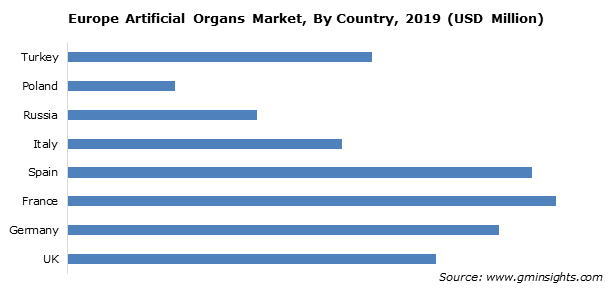Get a free sample of Artificial Organs Market
Thank you!
Your inquiry has been received. Our team will reach out to you with the required details via email. To ensure that you don't miss their response, kindly remember to check your spam folder as well!
Form submitted successfully!
Error submitting form. Please try again.
Get a free sample of Artificial Organs Market
Thank you!
Your inquiry has been received. Our team will reach out to you with the required details via email. To ensure that you don't miss their response, kindly remember to check your spam folder as well!
Form submitted successfully!
Error submitting form. Please try again.
Artificial Organs Market Analysis
Plastic artificial organs market accounted for more than 22% share in 2019 led by its advantages including biocompatibility and cost-effectivity in manufacturing. With wide adoption of high polymers in artificial organ replacement, the segment will continue to observe growth during the forecast timeline.

Europe artificial organs market held over 25% of revenue share in 2019. During 2019, about 150,000 registrations were reported on organ waiting lists in the region, according to the European registry. Approximately, 41,000 organ transplantations occur every year and 48,000 new registrations are added on the waiting list. Growing burden of heart disease, end-stage kidney and lung disorders will thus continue to provide demand for artificial organs in European countries.
Why will plastic material segment contribute greatly to increase artificial organs industry share?
Plastic segment held 22% market share and will depict appreciable growth as the material has several advantages such as cost-effectivity in manufacturing and biocompatibility.
Which organ segment will emerge supreme in artificial organs market?
Artificial heart segment will witness 9.7% CAGR through 2026, propelled by massive increase in the number of artificial heart implantations.
Where will artificial organs market share depict an increase?
Europe accounted for 25% of the artificial organs industry share and will depict massive growth driven by rising burden of heart disease and lung disorders.
How much growth rate is the global artificial organs industry expected to register through 2026?
Global artificial organs market size is likely to grow at 8.9% CAGR through 2026, having recorded USD 18 billion in 2019, driven by efforts by researchers on innovative development of artificial organs to enhance their acceptance chances.